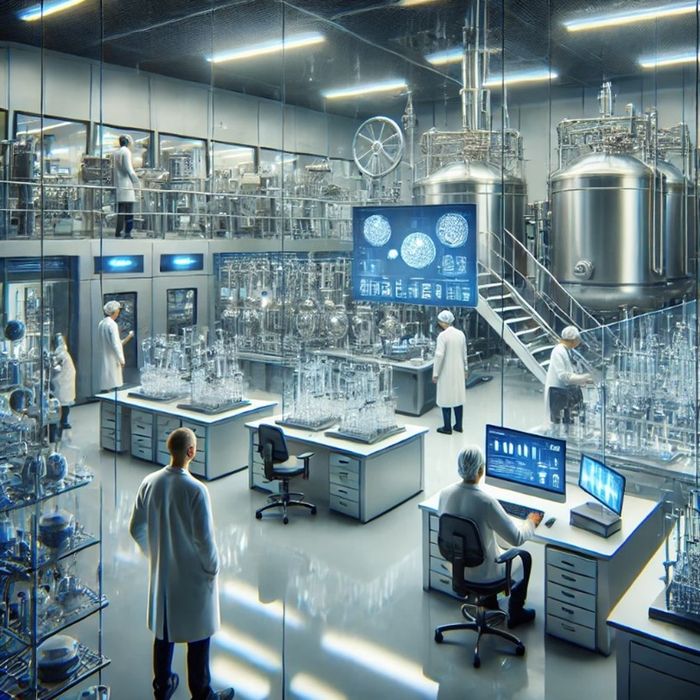
Charles R. Goulding and Warren Buzzell Jr. discuss the Agile BioFoundry’s cutting-edge technologies and the untapped potential of 3D printing in bioprocessing.
3D bioprinting is recognized as one of the major future growth opportunities. We had an opportunity to attend a Department of Energy (DOE) Office of Technology Transitions webinar where the Agile BioFoundry presented its tool kit for accelerating development in the bioprinting area.
The Agile BioFoundry (ABF), a consortium of seven Department of Energy National Laboratories, is paving the way for biomanufacturing advances, particularly in biofuels and bioproducts. At a recent presentation, ABF shared insights into its automated strain analysis pipeline, machine learning tools for synthetic biology, and gas fermentation capabilities, all redefining the potential for scalable bioprocessing. This article explores the innovative strides taken by ABF and speculates how 3D printing could further enhance their efforts.
Leveraging High-Throughput Strain Analysis
A cornerstone of ABF’s approach is their automated pipeline for strain analysis, which addresses the critical need to connect genotype with phenotype in bioengineering projects. For example, in their work with Pseudomonas putida for muconate production, ABF utilizes tools like the Qpix colony-picking system, which facilitates the rapid screening of pooled genomic libraries. The rapid screening of pooled genomic libraries is a method used in genetic research to quickly identify genes or genetic sequences that are linked to specific traits or functions. This setup, capable of handling 4-5 samples per minute, allows ABF to achieve large data analysis with a focus on quantifying over 1,000 proteins per sample.
The potential to integrate 3D printing into this process is intriguing. Imagine the creation of customized microreactors or bioreactors, a specialized vessel or system designed to support the growth and metabolic activity of microorganisms or cells, with specific dimensions tailored to the metabolic needs of each strain. Through rapid prototyping with 3D printing, researchers could design and print these bioreactors on demand, refining, and iterating designs based on experimental outcomes. Such adaptability could reduce downtime and enable researchers to test various bioprocessing conditions (i.e., bioprocessing refers to certain biological reactions such as with the creation of antibiotics like penicillin from mold).
The Role of Machine Learning with the Automated Recommendation Tool (ART)
The Automated Recommendation Tool (ART) embodies ABF’s commitment to integrating advanced computational methods into biomanufacturing. ART provides valuable predictions and recommendations that streamline synthetic biology workflows by analyzing variables such as protein concentrations, media components, and biofuel production levels. ART’s ability to produce actionable insights with as few as 27 data points is a testament to the tool’s efficiency and its capacity to expedite the Design-Build-Test-Learn (DBTL) cycle.
In this context, 3D printing can be supportive by offering rapid prototyping for testing and implementing ART’s recommendations. For example, ART may suggest modifications to bioreactor components to optimize gas exchange or media flow. With 3D printing, these components could be quickly produced and customized to match the tool’s specifications, allowing researchers to implement and evaluate ART’s suggestions with minimal delay.
Addressing the Scale-Up Valley of Death with ABPDU
The Advanced Biofuels and Bioproducts Process Development Unit (ABPDU) serves as a bridge between early-stage research and commercial viability. To achieve this, ABPDU has invested in state-of-the-art equipment, such as a bioreactor block of eight stainless steel reactors, which allows for individually controlled reactions under high-pressure conditions.
3D printing could further enhance ABPDU’s capabilities by providing cost-effective solutions for scaling up bioreactors. Custom-designed parts, such as laboratory diffusers or stirrers, could be printed to exact specifications, enabling precise control over gas distribution within each bioreactor. Additionally, 3D printed prototypes could be used for preliminary tests before committing to expensive custom manufacturing, thus saving time and resources.
The Research & Development Tax Credit
The now permanent Research and Development (R&D) Tax Credit is available for companies developing new or improved products, processes and/or software.
3D printing can help boost a company’s R&D Tax Credits. Wages for technical employees creating, testing and revising 3D printed prototypes can be included as a percentage of eligible time spent for the R&D Tax Credit. Similarly, when used as a method of improving a process, time spent integrating 3D printing hardware and software counts as an eligible activity. Lastly, when used for modeling and preproduction, the costs of filaments consumed during the development process may also be recovered.
Whether it is used for creating and testing prototypes or for final production, 3D printing is a great indicator that R&D Credit-eligible activities are taking place. Companies implementing this technology at any point should consider taking advantage of R&D Tax Credits.
Conclusion
The Agile BioFoundry’s work exemplifies the potential of combining biotechnology with advanced automation and data analytics to accelerate biomanufacturing. By integrating machine learning tools like ART, high-throughput strain analysis, and scalable gas fermentation processes, ABF is well-positioned to address some of the most pressing challenges in biomanufacturing. Yet, the potential for incorporating 3D printing into these processes remains largely untapped.
Through rapid prototyping and customizable equipment production, 3D printing could offer the industry the adaptability and cost efficiency needed to advance its biomanufacturing. Examples of this can be seen in our previously published articles, such as the one we did on Harvard’s Wyss Institute.
